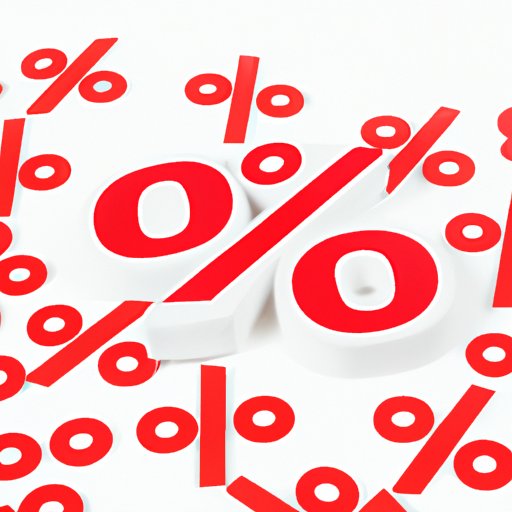Introduction
Whether you’re shopping, dining out, or handling finances, understanding how to calculate percentages is essential. Knowing how to calculate percentages can help you determine a tip, calculate sales tax, and even figure out discounts.
In this article, we’ll walk you through the steps on how to calculate percentages of money. We’ll cover converting percentages to decimals, calculating tips, determining sales tax, and figuring out discounts.
Converting Percentages to Decimals
Before you can calculate percentages, it’s important to know how to convert them to decimals. A percentage is a number expressed as a fraction of 100, whereas a decimal is a number expressed in a base-10 numerical system.
To convert a percentage to a decimal, divide the percentage by 100. Then, remove the percentage sign and the decimal point, if any. The resulting number is the decimal equivalent of the percentage.
For example, to convert 75% to a decimal:
75% ÷ 100 = 0.75
Common percentages and their decimal equivalents:
- 25% = 0.25
- 50% = 0.5
- 75% = 0.75
- 100% = 1.0
Calculating Tips
A tip is a gratuity given to someone who provides a service, such as a waiter or a hairdresser. It’s typically a percentage of the total cost of the service. It’s important to calculate tips correctly to ensure that you’re giving the right amount.
To calculate a tip, multiply the total bill by the percentage tip you want to leave. You can choose to leave a 15%, 18%, or 20% tip, or any other percentage you deem appropriate.
Tip = Total Bill x Tip Percentage
For example, if your bill at a restaurant is $50 and you want to leave a 20% tip:
Tip = $50 x 0.20
Tip = $10
Therefore, you would leave a $10 tip and pay a total of $60.
Determining Sales Tax
Sales tax is a percentage of a purchase that’s added onto the total cost. It’s important to know how to calculate sales tax because it affects the final cost of the purchase.
To calculate sales tax, multiply the cost of the item by the sales tax percentage.
Sales Tax = Cost of Item x Sales Tax Percentage
For example, if you buy a shirt that costs $20 and the sales tax in your state is 6%:
Sales Tax = $20 x 0.06
Sales Tax = $1.20
Therefore, the total cost of the shirt would be $21.20.
Figuring Out Discounts
A discount is a reduction in the cost of an item based on a percentage of the original price. Knowing how to calculate discounts can help you determine the final cost of a purchase and ensure that you’re getting a good deal.
To calculate a discount, multiply the original price by the discount percentage. Subtract the resulting number from the original price to get the final cost.
Final Cost = Original Price – (Original Price x Discount Percentage)
For example, if a shirt originally costs $30 and there is a 20% discount:
Final Cost = $30 – ($30 x 0.20)
Final Cost = $24
Therefore, the final cost of the shirt would be $24 after the discount.
Conclusion
Calculating percentages of money is an important skill that can help you in many real-life situations. In this article, we covered how to convert percentages to decimals, calculate tips, determine sales tax, and figure out discounts.
We encourage you to practice these skills to improve your ability to calculate percentages accurately and quickly. Whether you’re dining out or shopping, knowing how to calculate percentages can save you time and money.
